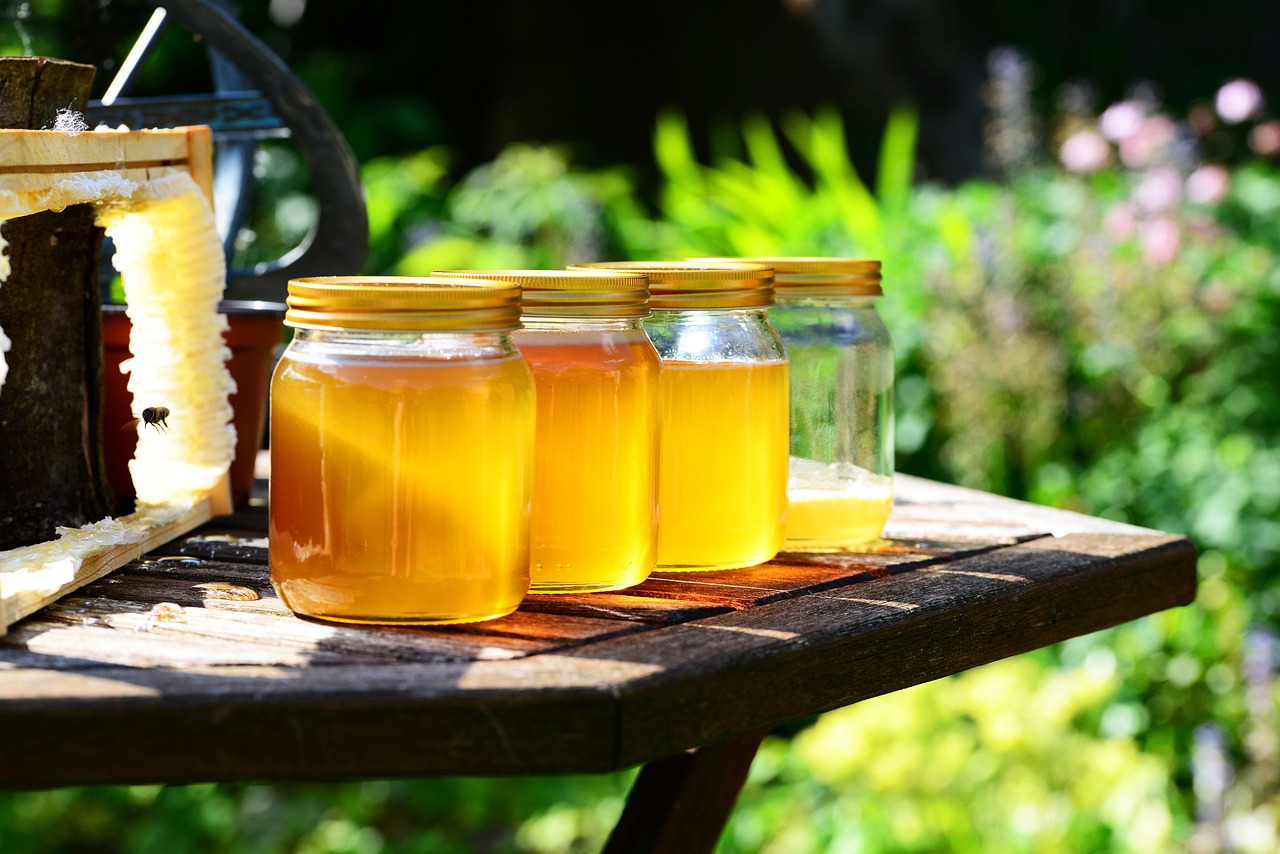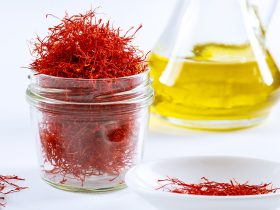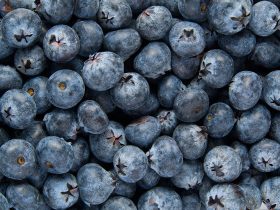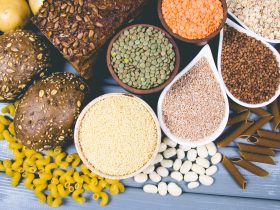We all know that sugar is not good for us, but most of us still enjoy a sweet treat so what about raw honey?
Switching from the consumption of sugar and high fructose corn syrup to using honey instead can present notable health advantages, since there are plenty of reasons why sugar is bad for your health.
The typical American adult intake includes approximately 17 teaspoons of added sugar daily. In 2021, the per capita consumption of high fructose corn syrup reached 69.8 pounds, equivalent to around 13 teaspoons per day.
In contrast, the average American consumed 1.75 pounds of honey in 2020, translating to only about one-third of a teaspoon per day.
The majority of honey available today undergoes processing, involving heat and filtration, from its original collection in the hive. On the other hand, raw honey is a pure, unpasteurized, and unfiltered sweetener created by bees from flower nectar.
Unlike processed honey, raw honey preserves a greater portion of its exceptional nutritional value and health-promoting properties. Let’s explore them together!
What is honey and how it’s made
Raw honey is essentially honey in its unprocessed state, directly extracted from honeycombs inside beehives. While it contains beneficial components like bee pollen and propolis, it may also harbor impurities like dead bees, beeswax, or other remnants, which are typically removed before bottling.
The key characteristic of raw honey is that it can’t undergo heating beyond 95 degrees Fahrenheit – its natural temperature in the hive. While straining is acceptable in raw honey processing, it should be unfiltered and unpasteurized, devoid of any additional additives.
Commercial honey often undergoes extensive processing, potentially including chemical refining, which can degrade its natural enzymes, vitamins, and minerals. Filtering and processing remove essential phytonutrients such as pollen and propolis, resulting in a clearer appearance achieved through heating.
Opting for organic raw honey, which appears opaque, ensures the retention of these vital nutrients.
Non-raw or commercial honey might originate from bees exposed to antibiotics or provided with sugar or low-cost syrup as winter nourishment. Additionally, hives made from non-organic materials and cleaned with non-organic substances may pose further concerns.
Research conducted by the Palynology Research Laboratory at Texas A&M University revealed that 76 percent of honey products from supermarkets lacked bee pollen, a valuable component that should be present in all varieties.
The U.S. Food and Drug Administration maintains that ultra-filtered honey products, which do not contain pollen, cannot be classified as true honey, thereby questioning their health benefits.
It’s important to note that some commercially available honey may even contain high fructose corn syrup, raising concerns about its authenticity and potential health implications. Therefore, opting for raw, organic honey sourced from reputable producers can ensure the retention of essential nutrients and minimize exposure to unwanted additives or contaminants.
What types of honey are there?
There are various types of honey, and understanding their distinctions is essential in recognizing their unique qualities and potential health benefits.
For honey to be labeled as “organic” it must have never been heated above 95 degrees Fahrenheit and has only been put exclusively through processing methods for organic honey such as gravitational settling and straining.
Here are some honey types to keep an eye out for:
- Fermented Honey – offers an intriguing option among honey varieties. It’s worth noting that crystallization in honey, while natural, may indicate an excess of sugars within the product.
- Manuka Honey – this unique honey originates solely from New Zealand, produced by European honeybees pollinating the Manuka bush (Leptospermum scoparium). It boasts a higher conductivity, indicating elevated mineral content compared to normal flower honey. Manuka honey is distinguished by its unique Manuka factor (UMF), which serves as a global standard for identifying and measuring its antibacterial strength. A minimum UMF5 rating is recognized, but the beneficial antibacterial activity typically begins at UMF10+. Ratings ranging from UMF10 to UMF15 are considered useful, while UMF16 and above signify superior quality, offering exceptional health benefits.
- Polyfloral vs. Monofloral Honey – honey can be categorized as polyfloral or monofloral. Monofloral honey comes from bees that collect nectar from a single flower species (mono), while polyfloral honey originates from bees gathering nectar from various flower sources.
There are various types of honey, including Acacia honey, known for its light color, Buckwheat honey, which is typically darker, and Neem honey. Among these, Manuka honey stands out as one of the most revered for its health benefits.
Each type of honey possesses unique characteristics, and while different varieties may offer positive health effects, the distinct measurement system and antibacterial rating, such as that found in Manuka honey with its UMF factor, set it apart from other types of honey.
Understanding these differences helps in making informed choices about the kind of honey that best suits individual preferences and health requirements.
Nutritional properties of honey
Honey serves as one of nature’s purest foods offering inherent health benefits.
In its raw form, honey comprises an impressive array of components such as:
- 27 minerals like phosphorus, magnesium, potassium, iron, selenium, zinc, and calcium
- 22 amino acids
- 5,000 enzymes
- Vitamins such as pantothenic acid, vitamin B6, niacin, thiamine, and riboflavin.
Moreover, honey contains nutraceuticals that combat detrimental free radicals, contributing to its antioxidant properties.
A tablespoon of honey equates to around 64 calories, boasting a favorable glycemic load of approximately 10 per tablespoon, slightly lower than that of a banana.
Unlike white sugar, raw honey doesn’t induce abrupt spikes in sugar levels or excessive insulin release.
Typically comprising about 18 percent water, honey’s quality improves with lower water content. Its storage doesn’t necessitate any specialized conditions or refrigeration, it remains easily usable, directly scooped from the jar.
Nutritional content may slightly vary based on the honey type and quality.
Benefits of honey consumption
Honey stands as a multifaceted natural ingredient, not just a sweetener, offering an array of health benefits such as:
- Natural Cough Syrup: Honey is a natural alternative to commercial cough syrups. Studies demonstrate its efficacy in reducing coughs and mucus secretion, comparable to common cough medicines. For individuals above the age of one, a recommended dosage is half a teaspoon to two teaspoons at bedtime.
- Counters Pollen Allergies: Raw honey contains bee pollen, which, through a process known as immunotherapy, can reduce sensitivity to local pollen, potentially alleviating seasonal allergy symptoms.
- Antioxidant Powerhouse: Regular consumption of raw honey elevates antioxidants in the body, countering disease-causing free radicals. It contains polyphenols and flavonoids, potent antioxidants that reduce the risk of heart disease and cancer. Luckily, it is part of famous diets such as the vegan ketogenic diet, which boasts numerous benefits in itself.
- Wound Healer: Honey’s antibacterial properties aid in wound healing. It generates hydrogen peroxide in the body, creating an environment hostile to bacteria. Studies suggest honey-infused bandages enhance healing, and it’s recommended for burns, wounds, and keloid therapy.
- Natural Energy Source: With its blend of natural sugars, minerals, vitamins, and protein, honey serves as a readily absorbed energy source. It’s deemed beneficial for pre- and post-exercise consumption, acting as an ideal pre-workout food and energy replenisher.
- Diabetes Aid: Raw honey, especially when combined with cinnamon, can assist in managing blood sugar levels. It might lower plasma glucose levels in diabetics and could potentially enhance insulin function while reducing hyperglycemia.
- Healthy Weight Management: Studies indicate that replacing sugar with honey can aid weight management and lower blood sugar levels. Raw honey may also activate hormones suppressing appetite, potentially offering protective effects against obesity.
These diverse benefits underscore honey’s versatility as a functional food, offering a natural and holistic approach to health management across various conditions and concerns.
20 ways of using raw honey
- Cholesterol Reduction: Honey consumption has shown potential in reducing cholesterol levels, thereby decreasing the risk of coronary artery disease.
- Exfoliation: Enhance dry winter skin by adding two cups of honey to a bath, soaking for 15 minutes, then adding one cup of baking soda for an additional 15 minutes.
- Sleep Enhancement: Adding a tablespoon of honey to warm milk may increase melatonin levels, promoting restorative sleep.
- Diabetes Support: Studies indicate that raw honey consumption may reduce the risk of developing diabetes and aid in diabetes medication.
- Anti-inflammatory Aid: Raw honey’s anti-inflammatory properties are beneficial for treating respiratory conditions like asthma.
- Allergy Relief: Local raw honey intake can potentially reduce seasonal allergies when consumed daily.
- Hair Mask: A raw honey hair mask, applied and rinsed thoroughly, can enhance hair shine and hydration.
- UTI Relief: Honey’s antibacterial properties can help improve urinary tract infections.
- Moisturizing: A mixture of raw honey, olive oil, and lemon can serve as a hydrating lotion.
- Weight Management: Replacing white sugar with raw honey may assist in weight management efforts, as observed in a study.
- Sore Throat & Cough Remedy: A teaspoon of honey or added to tea with lemon can effectively alleviate sore throat and cough, particularly beneficial for children.
- Shampoo: Raw honey serves as a natural cleanser and restorative agent for hair and scalp health.
- Digestive Health: Consuming one to two tablespoons of honey can counteract indigestion without fermenting in the stomach, as suggested by animal studies.
- Acne Treatment: Half a teaspoon of honey, gently applied on the face for 10 minutes and rinsed off with warm water, can act as a gentle and affordable face cleanser, combating acne across all skin types.
- Nausea Relief: Combining honey with ginger and lemon juice helps alleviate nausea effectively.
- Prebiotic Benefits: Raw honey serves as a natural source of prebiotics, fostering the growth of beneficial gut bacteria.
- Improved Circulation: Raw honey supports optimal brain function by strengthening the heart and enhancing blood circulation.
- Wound Healing: Topical application of raw honey accelerates healing for mild burns, wounds, rashes, and abrasions.
- Eczema Relief: Using honey along with cinnamon topically may alleviate mild eczema symptoms.
- Antioxidant Boost: Regular consumption of raw honey elevates plaque-fighting antioxidants in the body.
How to integrate raw honey into your diet
It’s crucial to avoid cooking with raw honey as heat can compromise its beneficial properties. Additionally, store it away from any heat sources to maintain its quality.
For those who prefer honey in their tea or coffee, it’s best to wait until the beverage is comfortably warm before adding raw honey to suit your taste.
You can drizzle raw honey over breakfast cereals, sprouted grain toast, or yogurt. It’s a versatile addition to smoothies or salad dressings and pairs excellently with fruits like honeydew and apples. There are also various advantages of consuming honeydew melon, so the combination could be a great one for you as well.
Consider raw honey as a healthier substitute for highly processed sugar in recipes that do not require heating. As a general guide, you can typically use two teaspoons of honey for every tablespoon of sugar in such recipes.
Are there any risks associated with raw honey consumption?
Honey is generally safe for consumption when taken in normal amounts or as recommended. However, 12-month-old infants should not consume it due to the potential presence of botulism spores in raw honey.
For older children and adults, raw honey isn’t a danger unless they have allergies.
Individuals with compromised immune systems, undergoing cancer treatments like chemotherapy or radiation, should consult their healthcare provider before consuming it.
People allergic or sensitive to celery, pollen, or with bee-related allergies should avoid raw honey. The toxicity of plants in the Rhododendron genus can make the honey derived from it trigger allergic reactions.
Despite being one of the healthiest sweeteners you can opt for, it’s essential to use honey in moderation. Excessive intake might lead to mild intoxication symptoms such as sweating, weakness, dizziness, vomiting, and nausea. Severe side effects are rare unless consumed excessively.
Another health risk appears when honey is heated at high temperatures, as it can produce hydroxymethyl furfuraldehyde (HMF). Studies, including one conducted on rats, have shown that heating honey between 60 to 140 degrees Celsius significantly increases HMF levels.
This is critical because HMF can have harmful effects and is considered carcinogenic.
It’s important to be aware of these potential risks and side effects associated with consuming honey, particularly in certain circumstances or when subjected to high temperatures.
















Find Us on Socials